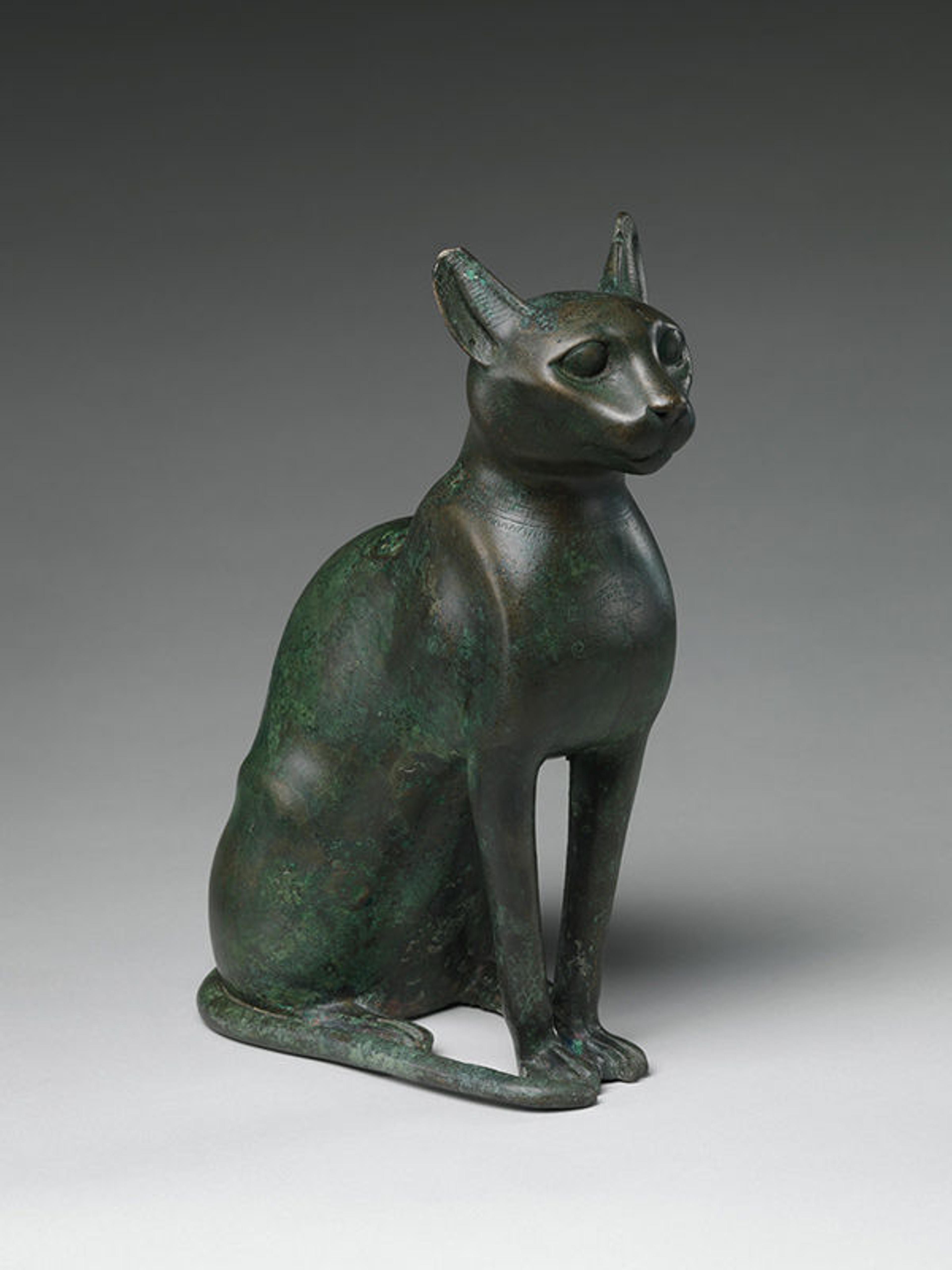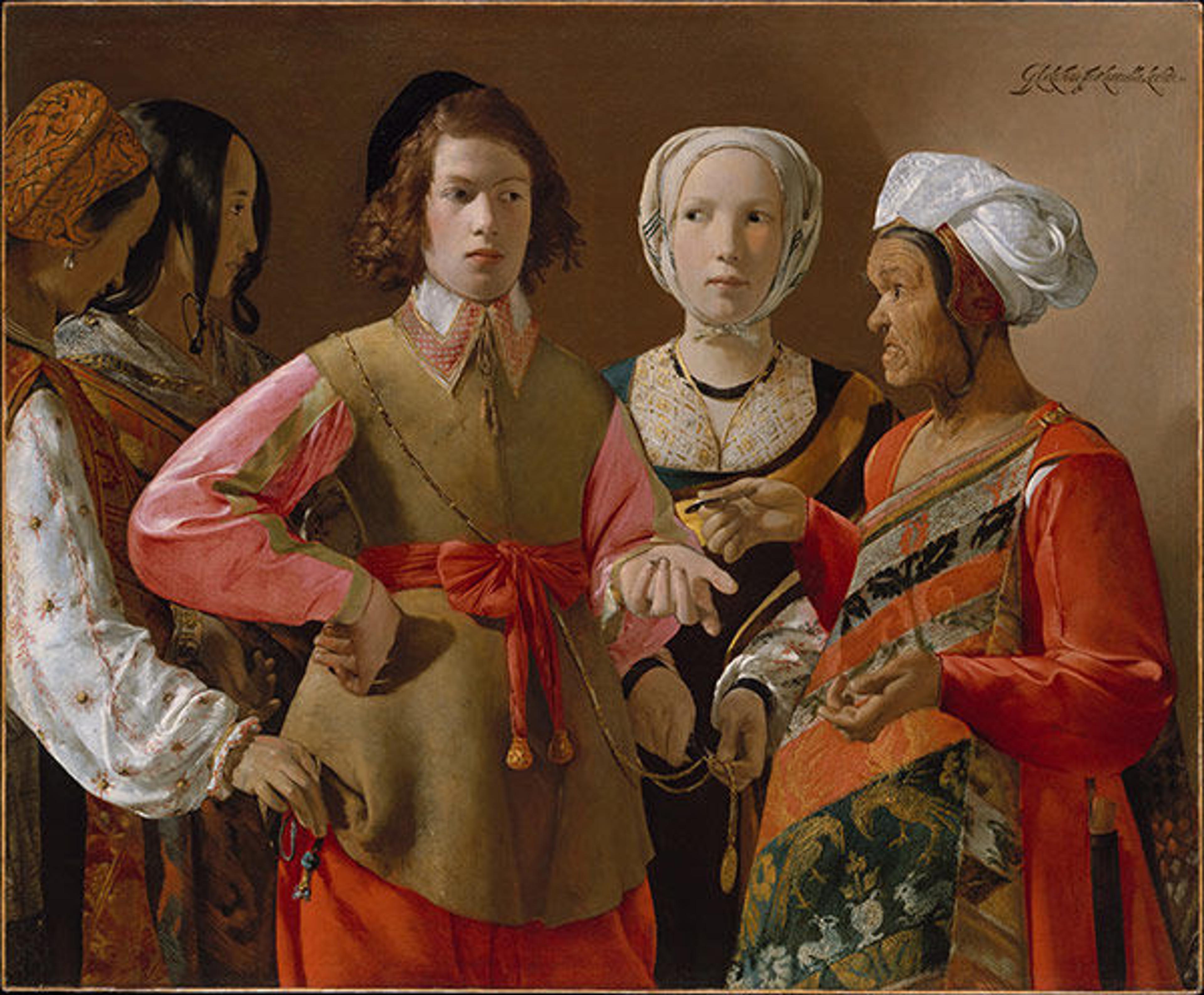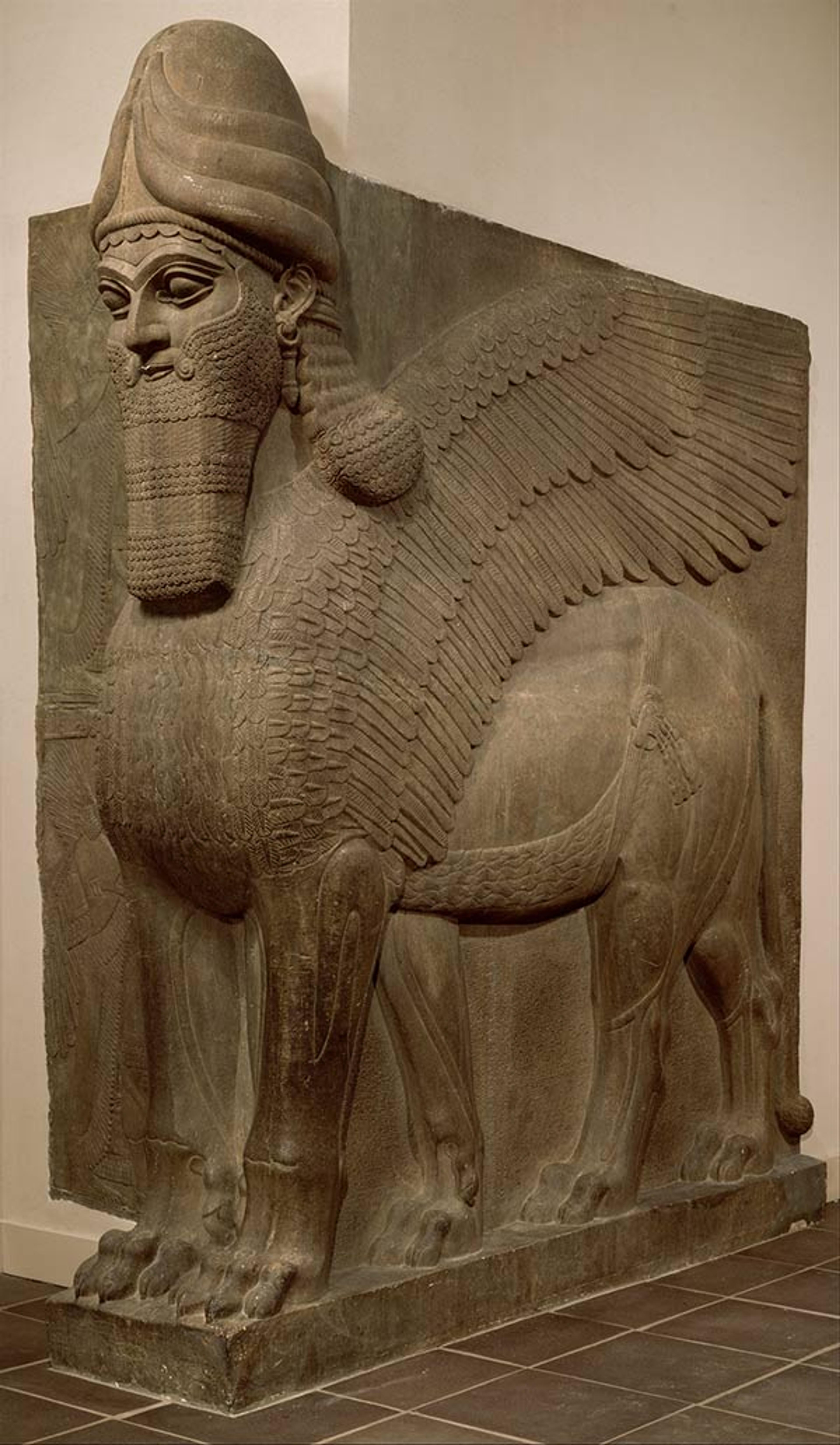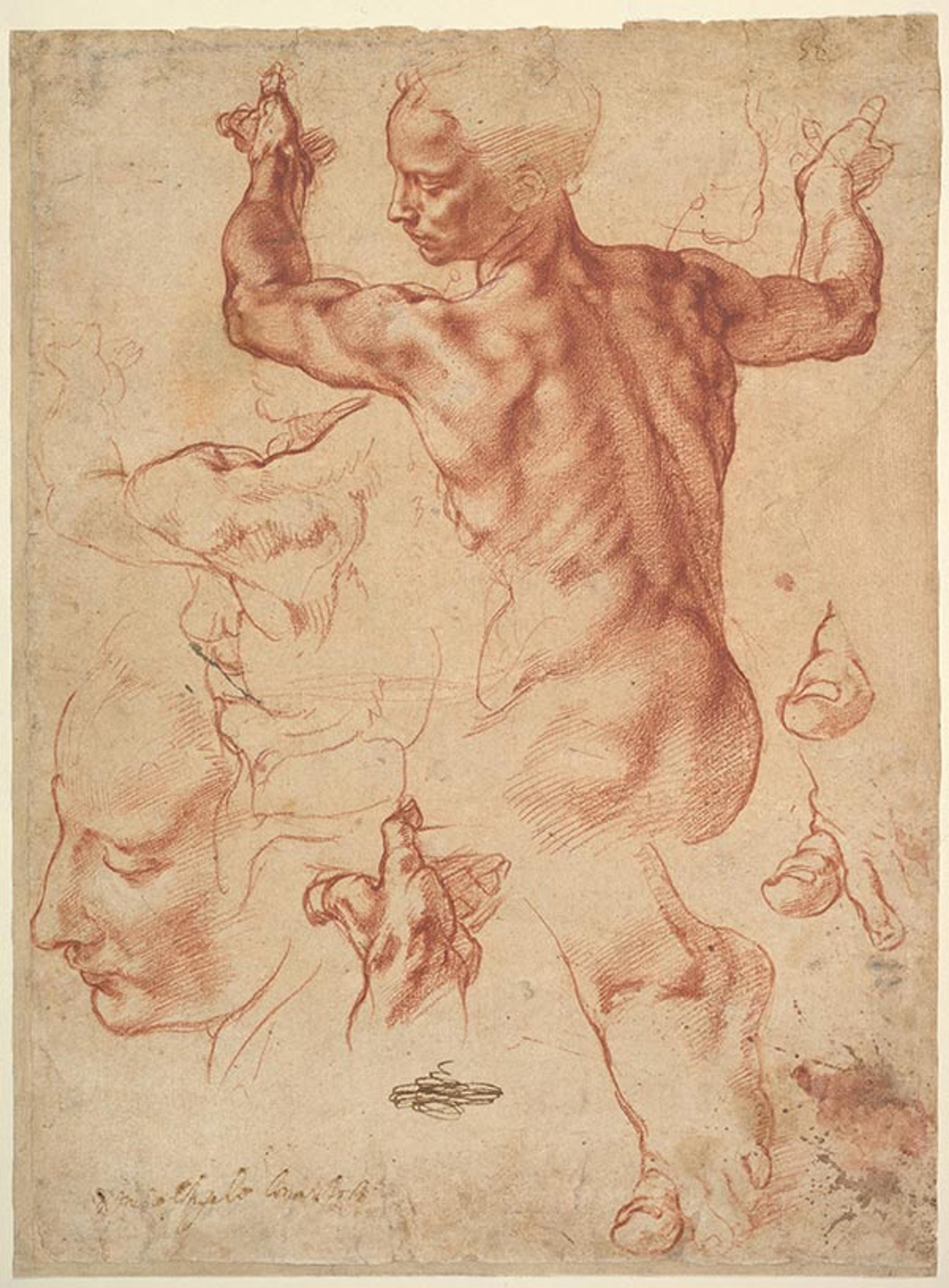Happy Halloween, #MetKids!
Illustration by Natasha Mileshina
«With Halloween just around the corner, we wanted to share a few of our favorite spooky, enchanting, and fanciful artworks in the Met's collection.»
Cat Statuette

Cat statuette intended to contain a mummified cat. Ptolemaic Period, 332–30 B.C. From Egypt. Bronze, leaded; H. (including tangs) 12 5/8 in. (32 cm); W. 4 11/16 in. (11.9 cm); D. 9 3/16 in. (23.3 cm) H. (cat alone) 10 13/16 in. (27.4 cm). The Metropolitan Museum of Art, New York, Harris Brisbane Dick Fund, 1956 (56.16.1)
Did you know that this was a container for a mummified cat? Egyptians used to mummify millions of animals—including crocodiles, cats, birds, and other creatures—as gifts for the gods.
The Fortune Teller

Georges de La Tour (French, 1593–1653). The Fortune Teller, probably 1630s. Oil on canvas; 40 1/8 x 48 5/8 in. (101.9 x 123.5 cm). The Metropolitan Museum of Art, New York, Rogers Fund, 1960 (60.30)
Trick . . . or treat? This painting shows some people who are up to no good! The older woman at the right handing a coin to the young man in the center is a fortune-teller. Hmm, what's happening while he's distracted?
Human-Headed Winged Lion

Human-headed winged bull and winged lion (lamassu), ca. 883–859 B.C.. Mesopotamia, Nimrud (ancient Kalhu). Assyrian. Gypsum alabaster; H. 10 ft. 3 1/2 in. (313.7 cm). The Metropolitan Museum of Art, New York, Gift of John D. Rockefeller Jr., 1932 (32.143.1–.2)
Move over, caped avengers! This carved beast with the wings of a bird, head of a man, and body of a lion was like an ancient superhero, protecting the gates of King Ashurnasirpal II's palace from evil. What sort of powers might each of its body parts provide?
Album of Tournaments

Album of tournaments and parades in Nuremberg, late 16th–mid-17th century. Nuremberg. German, Nuremberg. Pen and ink, watercolor, gold and silver washes; paper bound in gold-tooled leather; cover: 14 x 10 3/8 in. (35.56 x 26.35 cm); page: 13 5/8 x 9 7/8 in. (34.61 x 25.08 cm). The Metropolitan Museum of Art, New York, Rogers Fund, 1922 (22.229)
The elaborate costumes in this album of tournaments and parades in Nuremberg wouldn't look out of place at a masquerade party! This 112-page manuscript includes watercolor illustrations of actual parades, tournaments, and jousts that occurred over a span of more than a hundred years, between 1446 and 1561. The contestants could be identified by the colors, symbols, and creatures that decorated their equipment and armor.
Studies for the Libyan Sibyl

Michelangelo Buonarroti (Italian, 1475–1564). Studies for the Libyan sibyl (recto); studies for the Libyan sibyl and a small sketch for a seated figure (verso), ca. 1510–11. Red chalk, with small accents of white chalk on the left shoulder of the figure in the main study (recto); soft black chalk, or less probably charcoal (verso); sheet: 11 3/8 x 8 7/16 in. (28.9 x 21.4 cm). The Metropolitan Museum of Art, New York, Purchase, Joseph Pulitzer Bequest, 1924 (24.197.2)
This drawing by Michelangelo depicts a sibyl, or a woman who was able to foretell the future. In the finished painting on the ceiling of the Sistine Chapel, the sibyl holds a huge open book. Imagine what else this fortune-teller might hold.
What other magical or mysterious artworks are you thinking about this season? Tell us in the comments, and have a very happy Halloween, #MetKids!
Aliza Sena
Aliza Sena was formerly the associate coordinator for media production and online features in the Digital Department.